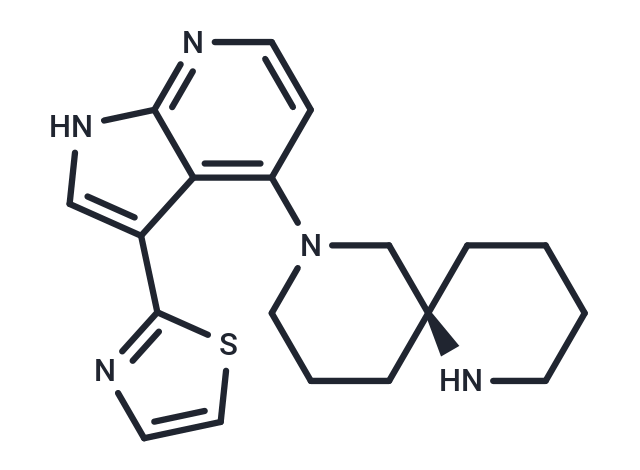Shopping Cart
- Remove All
 Your shopping cart is currently empty
Your shopping cart is currently empty

BDP8900 is a potent and selective MRCK inhibitor, reducing substrate phosphorylation. BDP8900 leads to morphological changes in cancer cells along with inhibition of their motility and invasive character.

| Pack Size | Price | Availability | Quantity |
|---|---|---|---|
| 25 mg | $2,120 | 8-10 weeks | |
| 50 mg | $2,780 | 8-10 weeks | |
| 100 mg | $3,700 | 8-10 weeks |
| Description | BDP8900 is a potent and selective MRCK inhibitor, reducing substrate phosphorylation. BDP8900 leads to morphological changes in cancer cells along with inhibition of their motility and invasive character. |
| Molecular Weight | 353.48 |
| Formula | C19H23N5S |
| Cas No. | 2226507-05-5 |
| Storage | Powder: -20°C for 3 years | In solvent: -80°C for 1 year | Shipping with blue ice. |

Copyright © 2015-2025 TargetMol Chemicals Inc. All Rights Reserved.